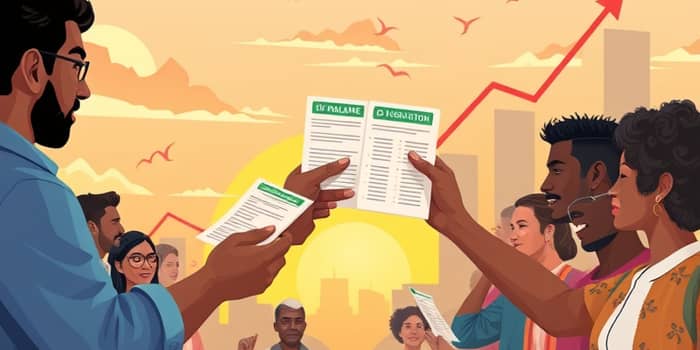
Payment holidays emerged as a lifeline for millions when global emergencies threatened household finances. This article examines their design, impact, and lessons for future crises.
Mass payment holidays are a relatively recent phenomenon, propelled into the spotlight by the unprecedented global COVID-19 pandemic. Prior to 2020, lenders offered these arrangements on a limited basis, often only as a negotiated feature within specific mortgage or loan contracts.
Key crisis periods prompting widespread holidays include:
During the pandemic, authorities such as the UK’s Financial Conduct Authority (FCA) instructed lenders to offer up to three months’ payment suspension on mortgages, loans, credit cards, and buy-now-pay-later products. Similar guidelines emerged from the US Consumer Financial Protection Bureau and European banking regulators.
Key features of these measures included:
In the UK alone, over 1.8 million mortgage payment holidays were granted by May 2020. Globally, millions more across the US, EU, and other regions accessed similar relief, spanning products from personal loans to buy-now-pay-later schemes.
Despite this broad coverage, certain obligations—such as utility bills and rental payments—were generally excluded, leaving lower-income renters and informal workers with fewer options.
To secure a holiday, borrowers typically submitted an application demonstrating financial hardship. Lenders, encouraged by regulators, were advised to process approvals swiftly and with minimal documentation during crisis peaks.
Once approved, the borrower’s monthly payments paused, but interest continued to accrue on outstanding balances. This accrued interest was either added to the end of the loan term or integrated into future payments, potentially increasing monthly costs or extending the repayment period.
Payment holidays delivered critical short-term relief, but were not without cost. Borrowers benefited from immediate cash flow improvements, yet faced potential “payment shock” when the suspension ended.
Regulatory mandates strained bank liquidity and capital planning, requiring close oversight and, in some cases, public backstops. However, these measures were widely regarded as essential to avert mass defaults and sustain economic activity.
Lenders adapted by enhancing digital application systems and creating specialized hardship units to handle the surge in requests, innovations that are likely to persist beyond crisis periods.
While payment holidays protected homeowners and loan holders, many renters and those with only utility or phone bills remained vulnerable. The gig economy and informal workers often encountered greater barriers to accessing relief.
These disparities highlighted the importance of designing inclusive financial safety nets that address the full spectrum of consumer obligations during emergencies.
Different jurisdictions adopted varying approaches to payment holidays. The following table summarizes key parameters across major regions during the COVID-19 crisis:
The pandemic-era deployment of payment holidays offers valuable insights for future crisis responses. Rapid regulatory coordination and broad eligibility criteria proved effective in mitigating peak financial distress.
Going forward, policymakers and industry stakeholders must refine crisis mechanisms, ensuring both immediacy of relief and clarity around long-term repayment implications. Clear borrower communication and financial education will be essential to maximize the benefits of any future payment holiday schemes.
Ultimately, the mass application of payment holidays during COVID-19 demonstrated that well-designed, regulator-backed interventions can stabilize economies and support vulnerable households. As global risks evolve, these lessons will inform more resilient and inclusive financial safety nets.
References













